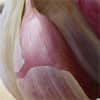
What's Hot
What's Hot
| News flashes are posted here frequently to keep you up-to-date with the latest advances in health and longevity. We have an unparalleled track record of breaking stories about life extension advances.
Selenium reduces HIV replication
Epidemiologic studies have found an association between selenium deficiency and the severity of AIDS, the disease caused by HIV, which indicates a protective role for the mineral during infection with the virus. Selenium is incorporated into proteins which decrease infection-induced stress, reducing the spread of the infectious agent. Human immunodeficiency virus degrades these selenoproteins, allowing increased replication. Penn State assistant professor of immunology and molecular toxicology K. Sandeep Prabhu and colleagues added sodium selenite to cultured cells infected with HIV and found a greater than 10 fold inhibition of viral replication compared with cultures to which no selenium was added. Subsequently, when the selenoprotein TR1 was reduced by the scientists, a 3.5 increase in viral replication occurred. "Since HIV targets the selenoproteins, we thought that the logical way to deal with the virus is to increase the expression of such proteins in the body," Dr Prabhu explained. "We have found that increasing the expression of proteins that contain selenium negatively affects the replication of HIV. Our results suggest a reduction in viral replication by at least 10-fold." "This confirms that while increasing the expression of TR1 has a negative impact on the replication of HIV, reducing it helps the virus replicate more efficiently," Dr Prabhu concluded. "Once we fully understand the function of these selenium proteins, it will give us a handle to come up with more effective drugs." —D Dye Melatonin shows promise against common eye disorder
In their article entitled "Therapeutic Effect of Melatonin in Experimental Uveitis," Pablo Horacio Sande et al report the results of subcutaneous administration of melatonin to hamsters in which uveitis was induced. The team found that tumor necrosis factor-alpha and nuclear factor kappa-beta, factors that contribute to inflammation, were reduced compared to levels measured in animals that received no melatonin. Also reduced were such symptoms including blood vessel dilation, inflammation and cataract. Melatonin additionally was shown to help protect the integrity of the blood-ocular barrier. "Melatonin, which lacks adverse collateral effects even at high doses, could be a promising resource in the management of uveitis," the authors write. "Alone or combined with corticosteroid therapy, the anti-inflammatory effects of melatonin may benefit patients with chronic uveitis and decrease the rate and degree of corticosteroid-induced complications." "Even as preventive strategy, the present results suggest that melatonin, a very safe compound for human use, should be included in the ophthalmic therapeutic resources," they conclude. —D Dye Centenarians have longer lived children
Dellara F. Terry, MD, MPH, of Boston Medical Center and colleagues compared 444 centenarian offspring enrolled in the New England Centenarian Study with 192 control subjects who did not have a centenarian parent. The average age of the subjects was 72. Health questionnaires completed upon enrollment from 1997 to 2006 were collected at the beginning of the study, and follow-up questionnaires were collected between 2004 and 2007 Over up to eight years of follow-up, centenarian offspring were 81 percent less likely to die from any cause compared to the control group. Children of centenarians had a 78 percent lower risk of heart attack, an 83 percent lower risk of stroke, and a 86 percent lower risk of developing diabetes than children of noncentenarians. The study is the first to evaluate the health of children of centenarians over time, and adds evidence to a genetic basis for long lived families. Previous findings have indicated that avoiding or delaying cardiovascular disease and risk factors is a common trait among the families of centenarians. "These advantages persisted over the several years of the study when they are compared to a similarly-aged group whose parents did not survive to very old age," Dr Terry noted. The authors conclude that their results reinforce "the importance of cardiovascular health in achieving exceptional old age as well as the familial nature of longevity." —D Dye Garlic compound yields potential diabetes therapy
Hiromu Sakurai, of the Suzuka University of Medical Science in Japan and colleagues expanded previous research in which the team demonstrated that an intraperitoneally administered allixin-vanadium complex abbreviated as VO(alx)2 lowered blood glucose levels in mouse models of diabetes type 1 and 2, and helped maintain the reduction in the type 2 model when administered orally. For the current research, the group studied the effect of the VO(alx)2 on glucose levels and gene expression in mice in which diabetes type 1 was induced. Dr Saukurai's team found that VO(alx)2 reduced blood glucose levels as well as normalized the expression of 152 down-regulated and 11 up-regulated genes in the muscles of the mice compared to pre-treatment status. They discovered that the complex activated the insulin signaling cascade, which regulates glucose metabolism, as well as an enzyme that helps the cells absorb glucose. Dr Sakurai hopes that VO(alx)2 or similar complexes could be developed into orally administered antidiabetic agents that could provide an alternative to current treatments with insulin injections or drugs that have side effects. John McNeill, who is a professor emeritus in the division of pharmacology and toxicology at the University of British Columbia in Vancouver, observed that the current investigation "adds significant information to our understanding of how vanadium compounds can affect both carbohydrate and lipid metabolism." "Allixin and similar complexes could be good candidates for treating both type 1 and type 2 diabetes," he predicted. —D Dye Astragalus compound slows telomere shortening in T lymphocytes
The enzyme known as telomerase prevents telomeres from shortening when activated. Unlike most of the body's cells, immune system cells upregulate telomerase with their activation. However, with aging or chronic infection with HIV, there is an increase in the proportion of dysfunctional CD8 T-cells with short telomeres, demonstrating that telomerase has a limited effect. "The problem is that when we're dealing with a virus that can't be totally eliminated from the body, such as HIV, the T-cells fighting that virus can't keep their telomerase turned on forever," explained UCLA AIDS Institute member Rita Effros. "They turn off, and telomeres get shorter and they enter this stage of replicative senescence." In a study described in the November 15, 2008 issue of the Journal of Immunology, Dr Effros and her colleagues tested a compound known as TAT2, originally derived from the Chinese herb astragalus, on CD8 T-cells from HIV-infected individuals. They found that TAT2 retarded the shortening of the cells' telomeres as well as improved their production of chemokines and cytokines that help inhibit HIV replication. "The ability to enhance telomerase activity and antiviral functions of CD8 T-lymphocytes suggests that this strategy could be useful in treating HIV disease, as well as immunodeficiency and increased susceptibility to other viral infections associated with chronic diseases or aging," the authors write. Dr Effros added, "This has the potential to be either added to or possibly even replace the HAART (highly active antiretroviral therapy), which is not tolerated well by some patients and is also costly." —D Dye Vitamin D: radiation shield
"Our general understanding and appreciation of the multifaceted protective actions of vitamin D have recently entered a new era," writes Dr Hayes. "It is now becoming recognized that its most active molecular form, 1,25-dihydroxyvitamin D3, may offer protection against a variety of radiation- and otherwise-induced damages." While low level radiation is continually released from natural sources such as rocks, a nuclear power plant accident or other event would release an intense, short term burst of cancer-causing radiation. Vitamin D could offer an inexpensive, oral route of protection from either source. In his article, Dr Hayes discusses vitamin D's mechanisms of protection against radiation damage, which include cell cycle regulation and proliferation, cellular differentiation and communication, programmed cell death (apoptosis and autophagy), and antiangiogenesis. By blocking DNA damage and arresting the progression of damaged cells, vitamin D could offer long term protection against cancer. "Vitamin D by its preventive/ameliorating actions should be given serious consideration as a protective agent against sublethal radiation injury, and in particular that induced by low-level radiation," Dr Hayes concludes. —D Dye High blood pressure associated with reduced potassium levels
The analysis evaluated data from 3,300 participants in the Dallas Heart Study. The researchers determined an association between low urinary levels of potassium and elevated blood pressure, particularly among African Americans, who made up 50 percent of the study population. The relationship remained significant following adjustment for age, race, elevated cholesterol, diabetes and smoking. "The lower the potassium in the urine, hence the lower the potassium in the diet, the higher the blood pressure," explained lead author Susan Hedayati, MD, of the University of Texas Southwestern Medical Center and the Dallas VA Medical Center. "This effect was even stronger than the effect of sodium on blood pressure." "Our study included a high percentage of African-Americans, who are known to consume the lowest amounts of potassium in the diet," she added. In research conducted in the laboratory of coauthor Dr Chou-Long Huang, a gene known as WNK1 was found to be involved in potassium's effect on blood pressure. "We are currently doing more research to test how low potassium in the diet affects blood pressure through the activity of this gene," Dr. Hedayati stated. "There has been a lot of publicity about lowering salt or sodium in the diet in order to lower blood pressure, but not enough on increasing dietary potassium," Dr Hedayati noted. "High-potassium foods include fruits such as bananas and citrus fruits and vegetables. Consuming a larger amount of these foods in the diet may lower blood pressure." —D Dye Sports supplement improves fitness in older individuals
In a double-blind trial, Jeffrey R. Stout, PhD, of the University of Oklahoma's Department of Health and Exercise Science, and his colleagues randomized 9 men and 17 women with an average age of 72.8 to receive 800 milligrams beta-alanine three times per day or a placebo for 90 days. Fitness was evaluated by electromyographic testing during cycling intervals engaged in by the participants before and after the treatment period. At the study's conclusion, 67 percent of those who received beta-alanine demonstrated improved fitness levels, compared with 21.5 of the placebo group. "Our data suggest that 90 days of beta-alanine supplementation increases physical working capacity in elderly men and women," the authors remark in their discussion of the results. "These findings are clinically significant, as a decrease in functional capacity to perform daily living tasks has been associated with an increase in mortality, primarily due to increased risk of falls." "This could have importance in the prevention of falls, and the maintenance of health and independent living in elderly men and women," Dr Stout concluded. —D Dye Vitamin D is activated in the lungs to fight infection
"The more scientists have been studying vitamin D, the more we learn about new roles it plays in the human body," stated lead author Sif Hansdottir, MD, of the University of Iowa Carver College of Medicine.. "The active form of vitamin D is known to affect the expression of more than 200 genes, so we were interested both in the possible lung-specific production of active vitamin D and in vitamin D-dependent production of proteins that fight infections." By studying human lung tissue samples, Dr Hansdottir and his colleagues found that an enzyme called 1 alpha-hydroxylase helps convert vitamin D stored in the lungs' airway cells into the active form of the vitamin. "When we put the storage form of vitamin D on the lung airway cells, we saw them convert it to the active form," Dr Hansdottir explained. "The next step was to investigate whether this active form could affect the expression of genes." The team found that activated vitamin D increased the expression of a gene that controls the production of cathelicidin, which destroys bacteria, as well as the gene CD14 which produces a protein that assists cells in their recognition of potentially threatening pathogens. "Vitamin D not only increases proteins involved in bacterial killing but also can dampen inflammation," Dr Hansdottir added. "Controlling inflammation through vitamin D is good because too much inflammation can cause problems such as sepsis and seems to contribute to autoimmune disease." —D Dye Optimal vitamin E dose needed
Author Maret G. Traber of the Linus Pauling Institute in Corvallis, Oregon observed that 600 international units of vitamin E consumed every other day for ten years by participants in the Women's Health Study was associated with a 24 percent reduction in heart disease deaths over a ten year period. “That’s a significant benefit,” Dr Traber stated. However, she remarked that “In some people high doses of vitamin E increase the tendency to bleed. Women enrolled in the study had an increase in nose bleeds.” Although increased platelet aggregation has been proposed as vitamin E's anti-clotting mechanism, the research supporting this hypothesis was conducted in cell cultures rather than in living models, and high doses of the vitamin were shown to be necessary to elicit this effect. In the current article, Dr Traber suggests that vitamin E and vitamin K share a common metabolic pathway in the liver, and notes that while vitamin E in the liver increases, vitamin K declines. “Several different explanations could account for the interaction between the two vitamins,” she stated. “We need more research to understand the delicate balance between vitamins E and K.” —D Dye |

 In a report published in the November 28, 2008 issue of the
In a report published in the November 28, 2008 issue of the  In the December, 2008 issue of The
In the December, 2008 issue of The  The November, 2008 issue of
The November, 2008 issue of  An article published online on November 19, 2008 in the journal
An article published online on November 19, 2008 in the journal  Telomeres are protective regions at the end of the cells' chromosomes, which shorten each time a cell divides. When telomeres become sufficiently short, cells reach a stage known as replicative senescence in which they can no longer divide.
Telomeres are protective regions at the end of the cells' chromosomes, which shorten each time a cell divides. When telomeres become sufficiently short, cells reach a stage known as replicative senescence in which they can no longer divide. In the latest issue of the
In the latest issue of the  The 41st Annual Meeting and Scientific Exposition of the American Society of Nephrology, held Philadelphia, was the site of a presentation on November 8, 2008 of research results which showed that consuming insufficient amounts of potassium could be as important as high sodium intake as a risk factor for
The 41st Annual Meeting and Scientific Exposition of the American Society of Nephrology, held Philadelphia, was the site of a presentation on November 8, 2008 of research results which showed that consuming insufficient amounts of potassium could be as important as high sodium intake as a risk factor for  An article published online on November 7 2008 in BioMed Central's
An article published online on November 7 2008 in BioMed Central's  The November 15, 2008 issue of the
The November 15, 2008 issue of the An article published in the November, 2008 issue of the journal
An article published in the November, 2008 issue of the journal 